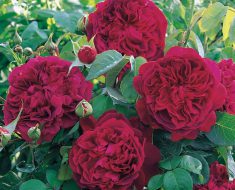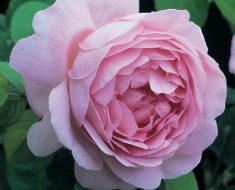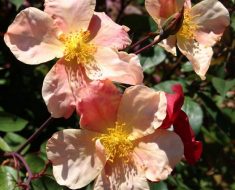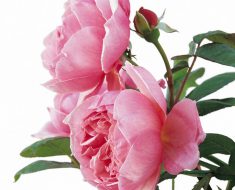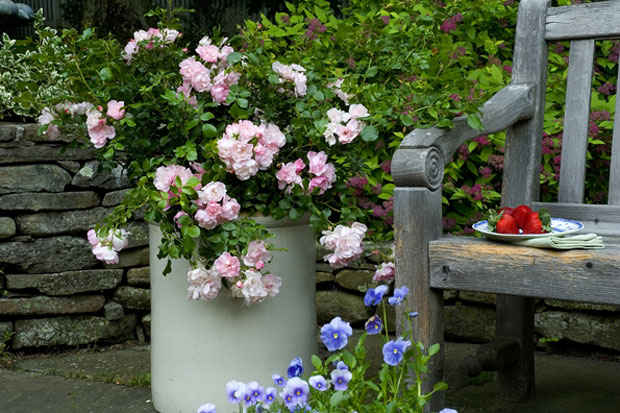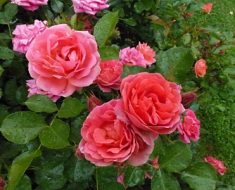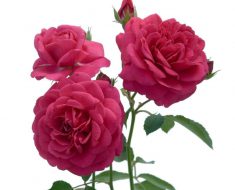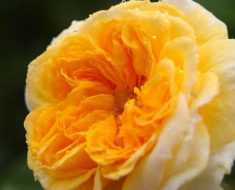Rose CHARLES AUSTIN – one of the early roses of D. Austin. This tall and branched plant is still popular among rose growers. Beautiful flowers, fruity refreshing and strong aroma and endurance contribute to this. It can also be found under such names Ausfather, Ausles and Charming Apricot. The English rose CHARLES AUSTIN is named after the father of breeder Charles Austin.
CHARMING APRICOT OR CHARLES AUSTIN
Characteristics. Rose Charles Austin
- Group – English roses
- Basic form – shrub
- Height – from 1.5
- Diameter – from 1.2 m
- Bush form – oval-round
- Color of the flower – apricot shades
- Number of petals – 70 (thickly terry)
- Flower shape – cupped, quartered
- Flower size – 10-12 cm
- Flowering form – clusters
- Flowering type – repeating
- Aroma – saturated, strong
- Foliage – dark green, large, thick, shiny
- Shoots – upright, strong, with spikes, under the weight of large flowers may lean to the ground
- Features – it is prone to throw shoots over 2-3 m in a warm climate due to which it can be grown as a short klimber; it is better to shorten it during trimming by ½ or ⅔; in a hot climate, flowers are smaller in size and burn out in the sun, showered, affected by pests; wintering without shelter, a maximum of -20С
- Resistance to powdery mildew – medium
- Resistance to black spotting – medium
- Cold resistance – 5-10 zones USDA
- Breeder – D. Austin
- Catalog name – Ausfather
- Year of introduction to the culture – 1973
- Soil – all types of
- pH – may be small vibrations from neutral (5.6 – 7.8)
- Drainage – required
- Plot – sunny / partial shade
- Container – yes
- Standard – yes
- Planting types – mixed planting, hedges, container garden, rose gardens
- Pests – typical for roses
- Diseases – prone to powdery mildew , black spotting, rust of roses
CHARLES AUSTIN
Take care of a CHARLES AUSTIN rose like this:
- Planting for roses is the most important step in leaving them. ROSE CHARLES AUSTIN prefers sunny areas with well-arranged drainage. It grows on almost all types of soils. The earth must be loose in order to allow enough water and air to pass through to the root system.
- Watering. Roses are watered as necessary – from 10 liters of water per 1 adult bush on average 2 to 3 times a week. In dry times, watering is more frequent. If the English rose CHARLES AUSTIN grows in a container, then watering is more frequent. In both cases, it all depends on weather conditions.
- Fertilizing with fertilizers is carried out at least 2 to 3 times during the growing season. It can be both mineral fertilizers and organic. Mineral complexes, which are introduced by spraying, also give roses. For roses growing in pots, top dressing is more frequent, but smaller doses are used.
- Pruning roses depends on the group to which it belongs. Pruning is done twice: in the summer, faded parts are constantly cut to stimulate the appearance of new flowers, and in autumn, winter or early spring, pruning is carried out to form the plant and prevent it from diseases or pests hiding under the bark of the plant. On this rose, it is better to leave short shoots. The CHARLES AUSTIN potted rose is also pruned.
- Loosening and weeding the soil around the rose bush is necessary for the circulation of air, moisture and nutrients for the root system. To minimize your labor, use mulching. This agrotechnical technique will help to reduce the number of weeds and the soil will be wet longer. This applies to container roses.
- Shelter for the winter is especially necessary if the minus temperatures are very low or in winter, frequent long thaws are characterized by a sharp decrease in minuses. Be sure to cover the English rose CHARLES AUSTIN, growing in pots.
CHARLES AUSTIN
Enjoy your cultivation!
